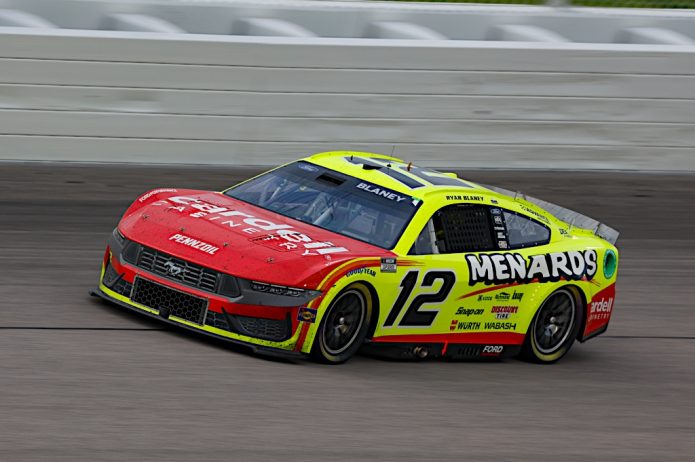Ford has long been a dominant force in the world of motorsports, with a rich history of racing success that spans over a century. From the iconic Model T to the modern-day Mustang, Ford has continuously pushed the boundaries of automotive engineering and performance.
However, it is not only the design and technology of their production vehicles that have garnered attention but also their prowess in the racing world. With a dedicated team and cutting-edge technology, Ford Racing has consistently delivered impressive results on the track. For those interested in experiencing the excellence of Ford vehicles firsthand, Kansas City Ford offers a range of models that embody the same innovative spirit.
In this article, we will delve into the technical specifications of Ford racing cars and analyze the key features that have led to their success.
Precise engineering techniques maximize power output:
The performance of Ford racing cars is a result of meticulous engineering techniques that are employed to maximize power output. Through careful design and optimization, every component and system within the car is fine-tuned to deliver optimal performance on the track. From the engine to the exhaust system, every aspect is analyzed and refined to ensure efficient energy transfer and minimal power loss.
Advanced techniques such as computer-aided design (CAD) and computational fluid dynamics (CFD) are utilized to simulate and optimize airflow, reducing drag and improving aerodynamics. Additionally, materials with high strength-to-weight ratios are utilized, reducing overall vehicle weight and further enhancing power-to-weight ratios.
The combination of these precise engineering techniques results in Ford racing cars that deliver exceptional power and performance, allowing drivers to push the boundaries of speed and agility on the racetrack.
Aerodynamic designs enhance speed and handling:
One crucial aspect that contributes to the impressive performance of Ford racing cars is their aerodynamic designs, specifically tailored to enhance speed and handling capabilities. Through a meticulous process of wind tunnel testing and computational simulations, engineers fine-tune the shape, contours, and surfaces of the car to minimize drag and maximize downforce.
By strategically channeling airflow around the vehicle, aerodynamic features such as spoilers, diffusers, and air dams work in harmony to optimize stability and control at high speeds. These design elements ensure that the racing cars maintain their grip on the track, allowing drivers to navigate turns with precision and experience minimal turbulence. The result is a seamless integration of form and function, where aerodynamics plays a vital role in elevating the performance of Ford racing cars to new heights.
Advanced technology ensures top performance results:
To achieve top-performance results, Ford’s racing cars utilize advanced technology that pushes the boundaries of automotive engineering. Cutting-edge systems and components are integrated into these high-performance vehicles to maximize power, responsiveness, and overall driving experience. The incorporation of state-of-the-art engine management systems enables precise control and optimization of fuel injection, ignition timing, and airflow, ensuring optimal power output at all RPM ranges.
Advanced suspension systems, such as electronically controlled dampers and adaptive ride control, provide superior handling and agility, allowing drivers to maintain control and maneuverability even under extreme conditions. Additionally, the use of lightweight materials, such as carbon fiber and aluminum alloys, reduces the overall weight of the car, enhancing acceleration and improving fuel efficiency. Through the utilization of advanced technology, Ford’s racing cars deliver unparalleled performance on and off the track, cementing their status as formidable contenders in the world of motorsports.
Efficient fuel systems for optimal efficiency:
Efficient fuel systems play a critical role in optimizing the performance specifications of Ford racing cars. These systems are designed to deliver a precise and controlled supply of fuel, ensuring that the engine operates at its optimal efficiency. By carefully analyzing factors such as fuel pressure, injector timing, and air-to-fuel ratios, engineers can fine-tune the fuel system to maximize power output while minimizing fuel consumption. Advanced technologies such as direct fuel injection and turbocharging further enhance the efficiency of the fuel system, delivering improved throttle response and overall performance.
By prioritizing efficient fuel systems, Ford racing cars can achieve exceptional performance while maintaining fuel efficiency, allowing drivers to push the limits of speed and power without compromising on environmental sustainability.
Racing tested for ultimate reliability:
Through rigorous testing and extensive track experience, Ford racing cars are proven to deliver ultimate reliability on the racecourse. These vehicles undergo an intensive process of racing testing, where they are subjected to extreme conditions and pushed to their limits to ensure their performance and durability. From endurance races to high-speed circuits, Ford racing cars are put through extensive trials to identify any potential weaknesses and make necessary improvements.
This dedication to testing and refinement ensures that Ford racing cars can withstand the demands of intense competition, providing drivers with the peace of mind to focus on their race strategy and pursuit of victory. With their racing-tested reliability, Ford racing cars have established a reputation for excellence in the world of motorsports.
Conclusion:
Ford Racing cars are built to perform at the highest level. Through advanced technologies and meticulous design processes, these vehicles can achieve exceptional speed, power, and handling. By analyzing the various performance specifications, it is apparent that every aspect of these cars has been carefully considered and optimized for peak performance.
As Ford Racing continues to innovate and push the boundaries of racing technology, we can expect to see even more impressive results on the track.


